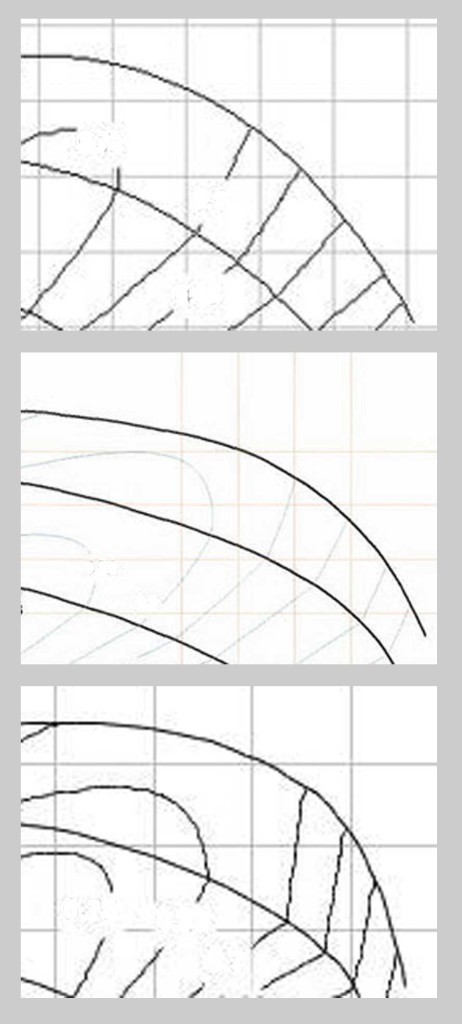Falling on it’s face… dying up top. Words to describe how some turbocharger is inadequate in the view of the person commenting on the turbochargers performance.
 Shown above are sections of the compressor maps from three popular turbo compressors in use on the Audi B5 S4. This section is the top right corner of the map. What I am trying to illustrate is the difference between a turbocharger that dies up top, runs out of breath, and falls on its face, compared to a turbocharger that does not.
Shown above are sections of the compressor maps from three popular turbo compressors in use on the Audi B5 S4. This section is the top right corner of the map. What I am trying to illustrate is the difference between a turbocharger that dies up top, runs out of breath, and falls on its face, compared to a turbocharger that does not.
See the difference? Notice how the one turbocharger compressor does not have a drop in volumetric flow rate at the maximum speedline PR even as the flow rate continues to increase? (PR is the vertical axis and flow rate is the horizontal axis.) No? You don’t see that? Neither do I, in fact all the compressor wheels show that with increasing flow rate the pressure ratio declines, and by a certain flow rate that PR drops quickly, as the turbo ‘falls on its face’.
So what’s behind this phrase that gets thrown around? It’s a description for a result that any compressor wheel eventually reaches, a point where in order to try and increase flow rate through the compressor requires a drop in the PR. Where you will find the phrase being used is in a comparison that pits a large compressor wheel against a smaller wheel, one where it should be quite apparent the larger wheel should be capable of flowing a greater volume of air, beyond what the smaller wheel is capable of, up to the point where the larger wheel also falls on its face, dies up top, and runs out of breath, just like the smaller wheel does.
If you have not figured out which map belongs to what turbocharger, the top is for the K04, middle the K03, and bottom the RS6.
